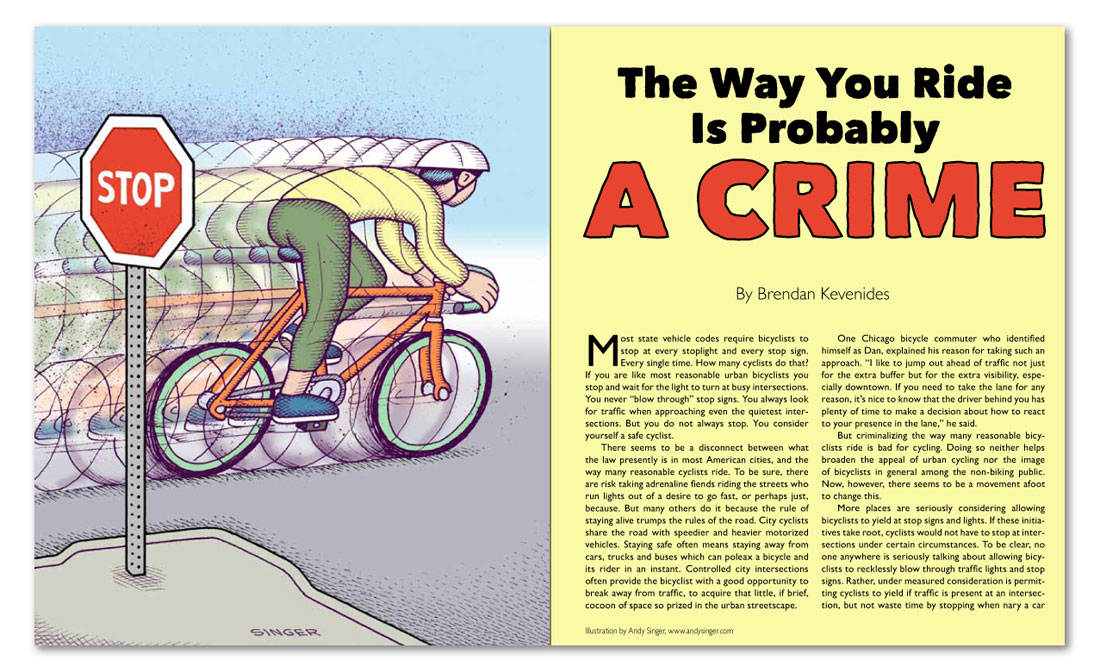


The Way You Ride Is Probably A Crime
Brendan Kevenides
Most state vehicle codes require bicyclists to stop at every stoplight and every stop sign. Every single time. How many cyclists do that? If you are like most reasonable urban bicyclists you stop and wait for the light to turn at busy intersections. You never “blow through” stop signs. You always look for traffic when approaching even the quietest intersections. But you do not always stop. You consider yourself a safe cyclist.
There seems to be a disconnect between what the law presently is in most American cities, and the way many reasonable cyclists ride. To be sure, there are risk taking adrenaline fiends riding the streets who run lights out of a desire to go fast, or perhaps just, because. But many others do it because the rule of staying alive trumps the rules of the road. City cyclists share the road with speedier and heavier motorized vehicles. Staying safe often means staying away from cars, trucks and buses which can poleax a bicycle and its rider in an instant. Controlled city intersections often provide the bicyclist with a good opportunity to break away from traffic, to acquire that little, if brief, cocoon of space so prized in the urban streetscape.
One Chicago bicycle commuter who identified himself as Dan, explained his reason for taking such an approach. “I like to jump out ahead of traffic not just for the extra buffer but for the extra visibility, especially downtown. If you need to take the lane for any reason, it’s nice to know that the driver behind you has plenty of time to make a decision about how to react to your presence in the lane,” he said.
But criminalizing the way many reasonable bicyclists ride is bad for cycling. Doing so neither helps broaden the appeal of urban cycling nor the image of bicyclists in general among the non-biking public. Now, however, there seems to be a movement afoot to change this.
More places are seriously considering allowing bicyclists to yield at stop signs and lights. If these initiatives take root, cyclists would not have to stop at intersections under certain circumstances. To be clear, no one anywhere is seriously talking about allowing bicyclists to recklessly blow through traffic lights and stop signs. Rather, under measured consideration is permitting cyclists to yield if traffic is present at an intersection, but not waste time by stopping when nary a car